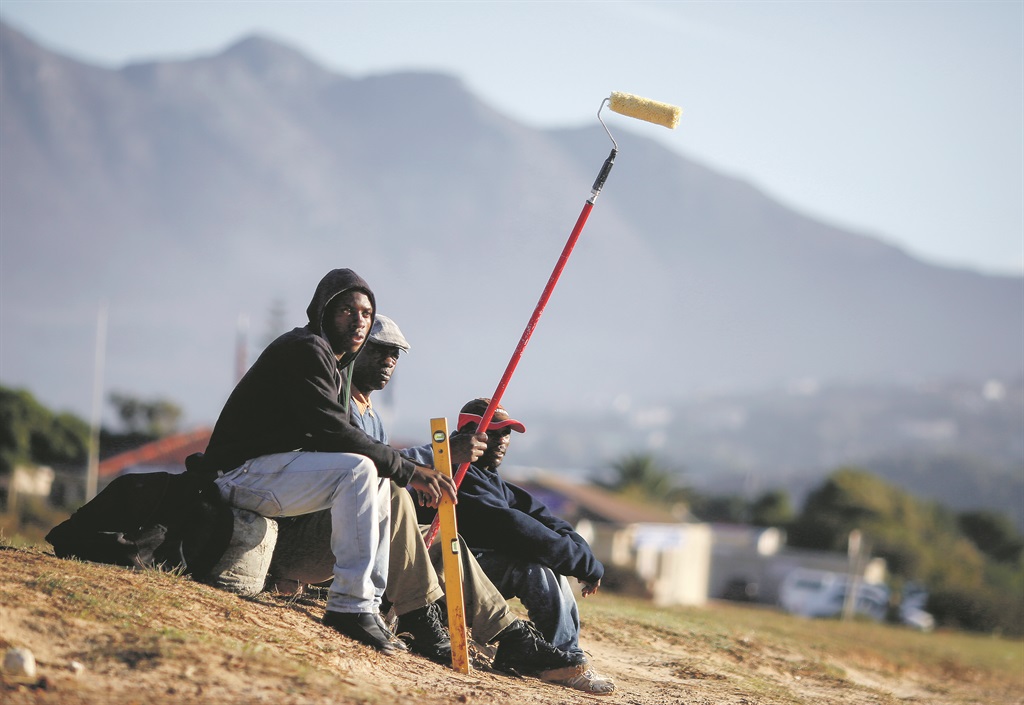
The five years to 2019 were likely to be the second-slowest five-year growth patch in the past 70 years, or since the end of World War 2, FNB chief economist Sizwe Nxedlana said this week.
For 2015 to 2019, Nxedlana is forecasting that the local economy will expand by an average of 1.2%, which will be the worst five-year growth patch going back to 1947, bar the five years from 1990 to 1994 – the years of uncertainty between the release of Nelson Mandela from prison and the first democratic elections, when the local economy expanded by 0.2%.
After World War 2, South Africa has, on average, grown 3.4% a year.
Nxedlana said during a presentation at the Insurance Institute of SA’s Insurance Conference at Sun City that there was evidence that the adjustment being made to the economy was not enough to resolve South Africa’s key challenges of low growth and unemployment.
He said that a confluence of external factors were buffeting South Africa and similar economies, including slower Chinese economic growth; a drop in commodity prices, which reduces domestic income; volatile emerging market capital flows, which increase funding costs; and the effect of drought on southern Africa.
“Lower income and dearer funding means spending must adjust downwards,” Nxedlana said.
Real gross domestic expenditure was likely to contract this year by 0.2%, followed by a muted recovery next year and in 2018.
“Persistently weak business confidence is holding back private fixed investment,” he said, adding that “the lack of business confidence is impairing private investment, and a better production and export performance”.
He said that continued weakness in domestic expenditure growth would be driven by state fiscal discipline; higher interest rates; muted employment growth; weak credit growth, particularly to households; and low consumer confidence.
Improved leadership, governance and supply-side reforms were important factors that could reignite confidence, he added.
What needs to be done to get SA growing and creating jobs?
SMS us on 35697 using the keyword GROW and tell us what you think. Please include your name and province. SMSes cost R1.50
A new recipe for growth and job creation
South Africa needs a new recipe for growth, says Nomfanelo Magwentshu, a partner at McKinsey’s local public sector practice.
“South Africa has come a long way since democracy in 1994, but a new recipe for growth and job creation is needed ... South African growth has been anaemic since 2008,” she said.
Magwentshu said there had been a lot of excitement from government officials about McKinsey’s ideas.
She outlined five sectors within the local economy that together could create more than R1 trillion in GDP and 3.4 million jobs by 2030.
These five growth sectors are advanced manufacturing, infrastructure, natural gas, service exports and the agricultural value chain.
Advanced manufacturing could create as much
as R540 billion in extra GDP and 1.5 million jobs
by 2030.
Turning to infrastructure, Magwentshu said that South Africa’s infrastructure spend level exceeded that of most other economies.
From 1992 to 2012, South Africa’s infrastructure spend as a percentage of GDP was 4.9%, which was behind China’s 8.9% of GDP, Saudi Arabia’s at 5.3% of GDP and Vietnam’s at 5.1% of GDP, but ahead of a number of other major countries.
Magwentshu said the country needed to spend money on power, roads, rail, ports and airports, but at the same time the country’s coffers were under pressure.
In addition, projects like Eskom’s new power stations had suffered from “huge cost overruns”.
“There is also a huge trust deficit between government and business,” she added.
By 2030, the effect of infrastructure productivity gains could add R260 billion a year to GDP and create up to 660 000 jobs.
Regarding power generation, Magwentshu said that after the Medupi and Kusile power stations came online, another power deficit would emerge from 2021 and become severe by 2025 if no extra capacity came on stream.
Magwentshu also said gas was critical to complement South Africa’s coal and nuclear base load by 2030.
The lead time for gas projects was two to four years, while coal was seven to eight years and nuclear was nine to 17 years.
Magwentshu put the levelised cost of coal at 73c per kilowatt-hour, 86c per kilowatt-hour for nuclear and 110c per kilowatt-hour for gas.
Turning to exports, Magwentshu said South Africa was punching well below its weight in the export of services into sub-Saharan Africa.
South Africa constitutes 25% of sub-Saharan African GDP, but only 2% of the region’s export of services.
This compares with Brazil’s 38% of Latin America’s GDP and 26% of the region’s export of services, the UK with 12% of Europe’s GDP and 19% of Europe’s export of services, and Japan with 27% of Asia-Pacific’s GDP and 8% of the region’s export of services.
Expanding service exports could increase value-added GDP by R245 billion and create 460 000 jobs
by 2030.
Turning to construction, Magwentshu said that China had the largest share of construction projects in
sub-Saharan Africa at 32% market share compared with South Africa’s 7%.
To capture the services opportunity, Magwentshu said that South Africa should focus on service export trade, build local construction market intelligence and target low-cost retail banking.
Focusing on agriculture, Magwentshu said that agriculture could increase GDP by R160 billion and add 490 000 jobs by 2030.
Looking at vocational training, Magwentshu said South Africa needed to shift to a vocational training model.
“In both emerging and developed economies, youth employment correlates positively with enrolment in vocational education,” she said.
South Africa has a youth unemployment rate of 52%.
Magwentshu suggested four initiatives to foster education for employment.
These included expanding training to between 40% and 60% of South African youth, boosting the quality of education, improving the youth’s soft skills and inviting business to play a greater role.
“South Africa will need to address its skills shortage through a dramatic expansion of vocational training because at least 40% of 3.4 million jobs will require vocational skills,” Magwentshu said.




 Publications
Publications
 Partners
Partners








